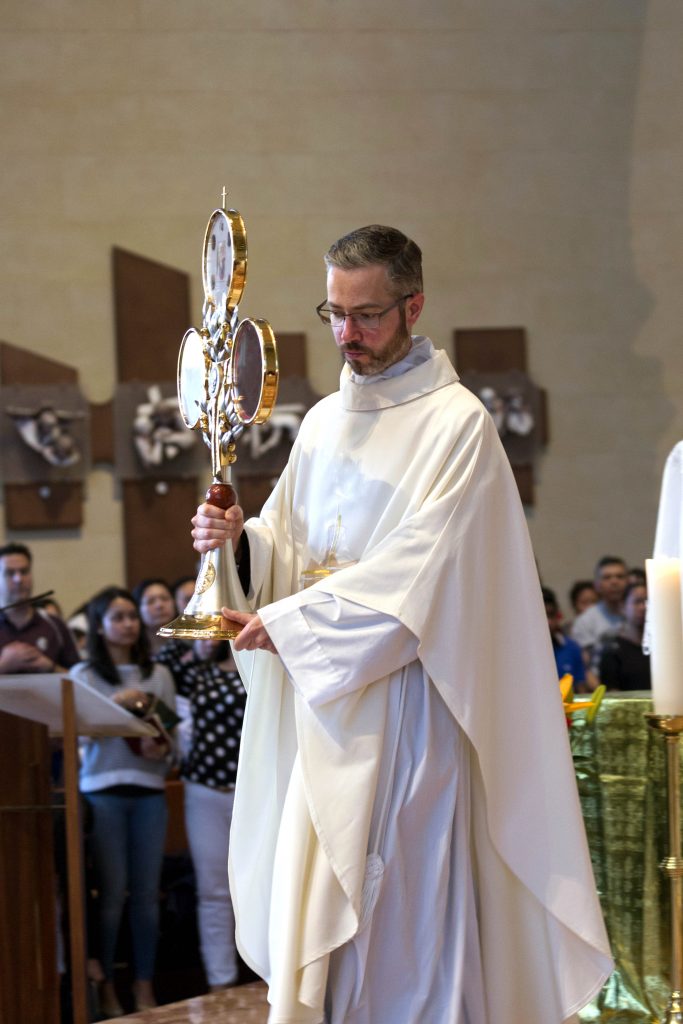
By Marco Ceccarelli
An estimated 9000 people recently passed through St Mary’s Cathedral in Perth as the relics of Italian Saint Pio of Pietrelcina, also known as Padre Pio, visited the Archdiocese.
From Saturday, 22 October until Wednesday, 26 October, members of the community had the opportunity to see and venerate the relics, and participate in one or more of the Masses, Reconciliations, Novenas, Benedictions, Anointings of the Sick and Rosaries held within the Cathedral.
“Something curious is happening,” Assistant Priest at St Mary’s Cathedral, Father Conor Steadman, fittingly noted in his homily at one such Mass, on 25 October.
“We have come here to offer our prayers and to celebrate Holy Mass, in the presence of the relics of a saintly Italian friar, Saint Pio of Pietrelcina, Padre Pio.
“Now the world does not understand what we are about. At best they might say that what we are doing here is an out-dated, antiquated ritual that hearkens back to a bygone era, or even worse, that this is superstitious custom that no longer applies in our scientific tech-savvy world. Really, what good can come from honouring the human remains and objects of a long deceased person?” Fr Steadman asked.
He then touched on an age-old question often raised by non-Christians and Christians alike. Why are relics venerated? What is the meaning of this practice?
Fr Steadman went on to explain that the veneration of the relics of saints reminds Christians of an important truth of their faith.
“Each one of us is created and willed by God to become a saint, to spend eternity with Him forever in heaven. This is why we were created in the first place. And the journey of our personal holiness begins now in this life,” he said.
More importantly, Fr Steadman explained, this journey should never be done alone.
“We are part of the Church, the body of Christ, the community of believers. And at death ‘life is changed not ended,’” he added.
As faithful followers of Jesus Christ who, in Fr Steadman’s words, are “here now, the Church militant, struggling for holiness in and among all the temptations and struggles and challenges that we have,” the veneration of relics is a reminder that the saints in heaven continue to pray and intercede for us as we struggle for holiness.
“This is why we venerate relics,” Fr Steadman stressed.
“As the Church, we are members of a family. And it is within this context that we should understand that relics are meant to be venerated, not worshipped. In honouring the memories of the saints we give thanks to God for the saints’ witness of a holy life.
“Their relics are, therefore, physical, concrete, and tangible reminders that Heaven is in fact obtainable for each one of us. In the presence of their relics, we pray for the same grace that they received, to achieve what they’ve achieved, to spend eternity with God in Heaven.”
At the conclusion of the Mass, Fr Steadman invited members of the congregation to come forward to kiss or to touch the relics and to ask for a special blessing through the intercession of Padre Pio.
St Pio of Pietrelcina, OFM Cap, was a Catholic friar and priest from the Order of Friars Minor Capuchin. Born Francesco Forgione on 25 May 1887, he died on 23 September 1968. St Pio became famous for exhibiting stigmata for most of his life, thereby generating much interest and controversy. He was beatified in 1999 and later canonised in 2002 by Pope John Paul II.